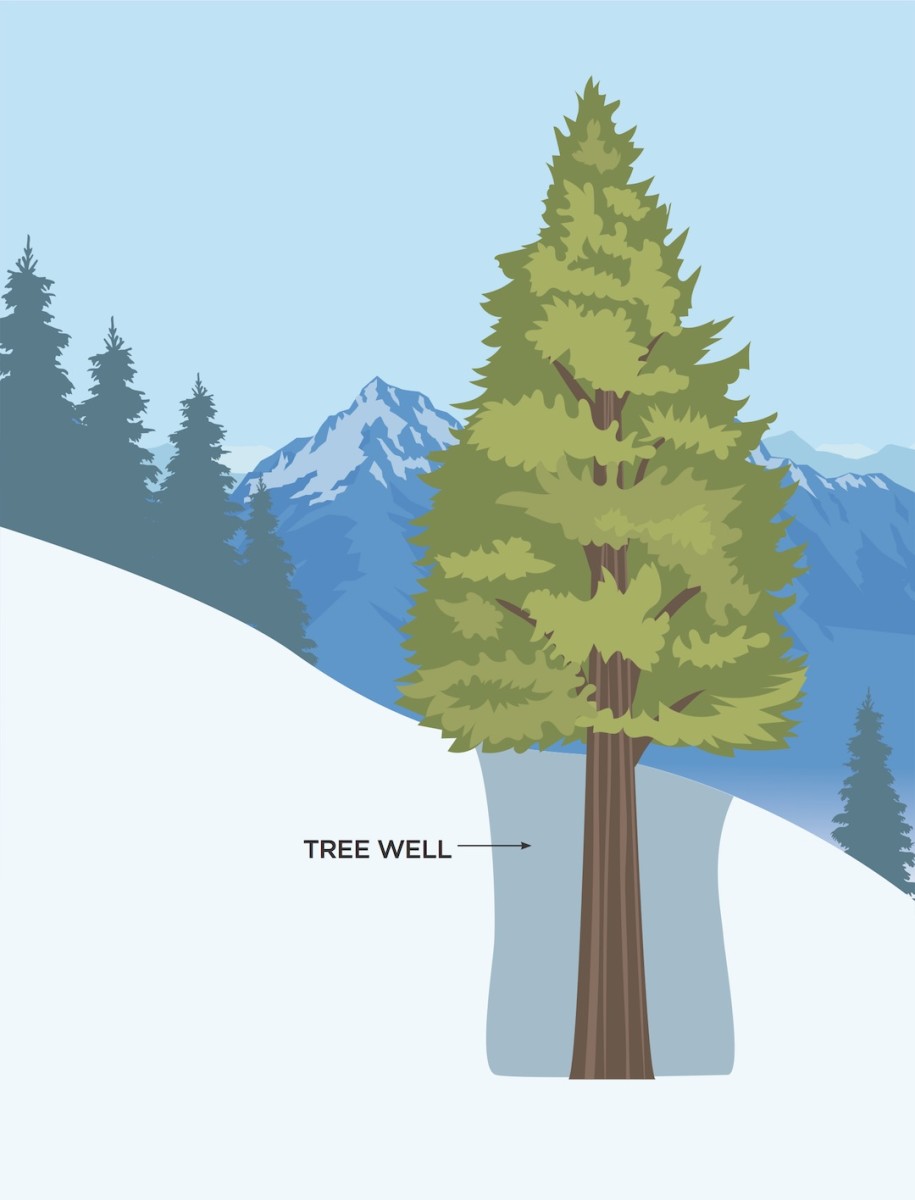
The skier who changed Brian Bell’s attitude about the ski-for-yourself adage that there’s “no friends on powder days” literally drowned in the snow. It was January 17, 2019, another fresh snow day in a seemingly endless stream of them at Fernie Alpine Resort in British Columbia.
Two friends were skiing together. Near the end of the day, one of them made it to the bottom of the lift, but the other never showed up. When he retraced their tracks, he found his buddy in a deep drift. He’d javelined head-first into the soft snow and suffocated before help could arrive.
“I was at the resort that day skiing by myself,” says Bell, the program coordinator for the Mountain Adventure Skills Training program at College of the Rockies in Fernie. “It could have been me. It could have been anyone.”
Look at an untracked slope and the first hazard that comes to mind for most skiers and boarders is avalanche. But when it comes to skiing and riding in-bounds, we’re four times more likely to die from drowning in the snow, like that skier in Fernie, or suffocating in tree wells.
“It’s the unspoken killer,” says Bell. “It seems like you should be able to self-rescue, but in unconsolidated snow you can’t really. When you wiggle you just go deeper.”
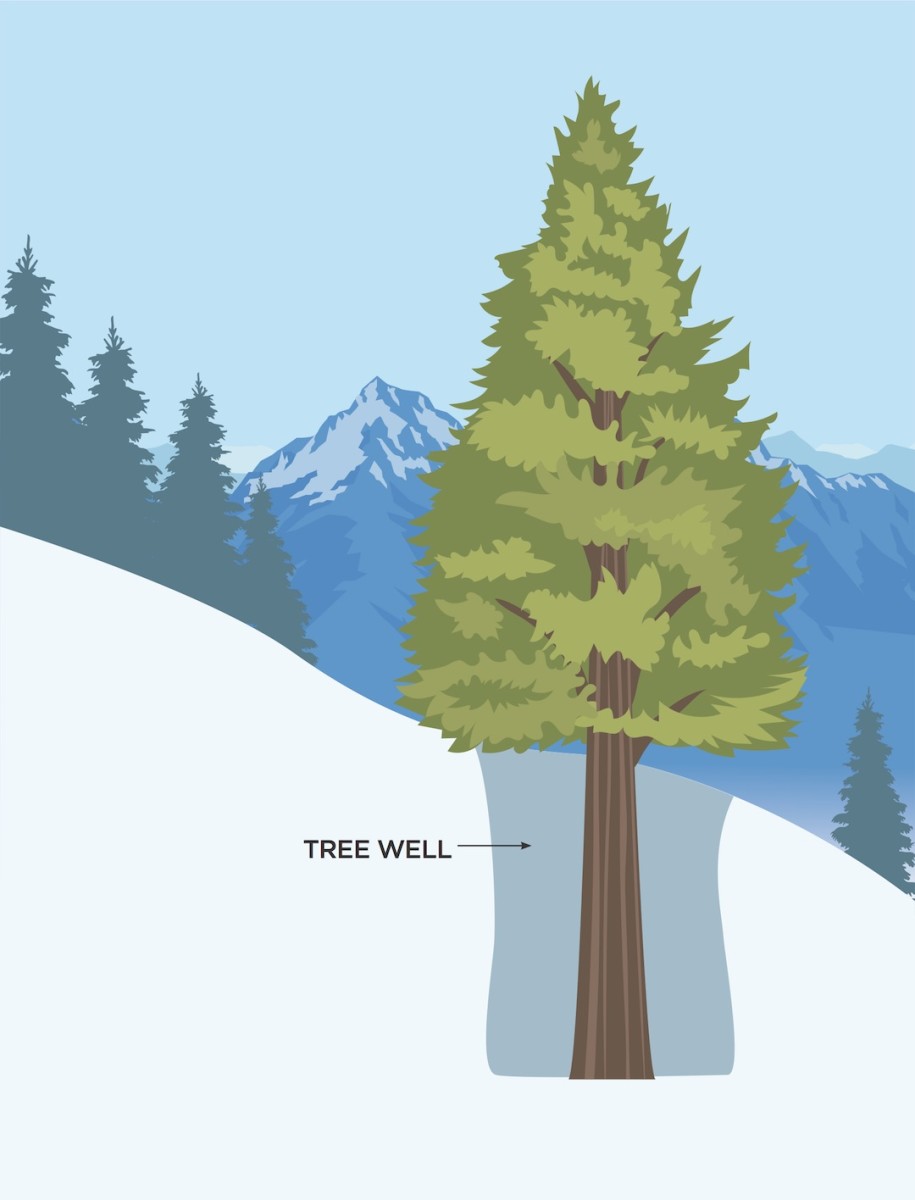
On average, four people every winter in the U.S. die from non-avalanche related suffocation, says Paul Baugher, a ski guide, former professional ski patroller and leading expert on snow suffocation. That many have already died this winter. Most involved tree wells, a moat-like depression under the boughs of conifer trees. Since, many coroners and even ski patrollers have mistaken the cause of death as exposure or collisions; he thinks the actual number of tree well and snow suffocation deaths is probably higher. And the number of incidents are increasing.
“We have more people chasing powder days,” he says. “That’s more exposure to the risk.”
After studying more than 50 snow-suffocation deaths Baugher started noticing some trends. The most dangerous time is late in the day after a deep, dry snowfall.
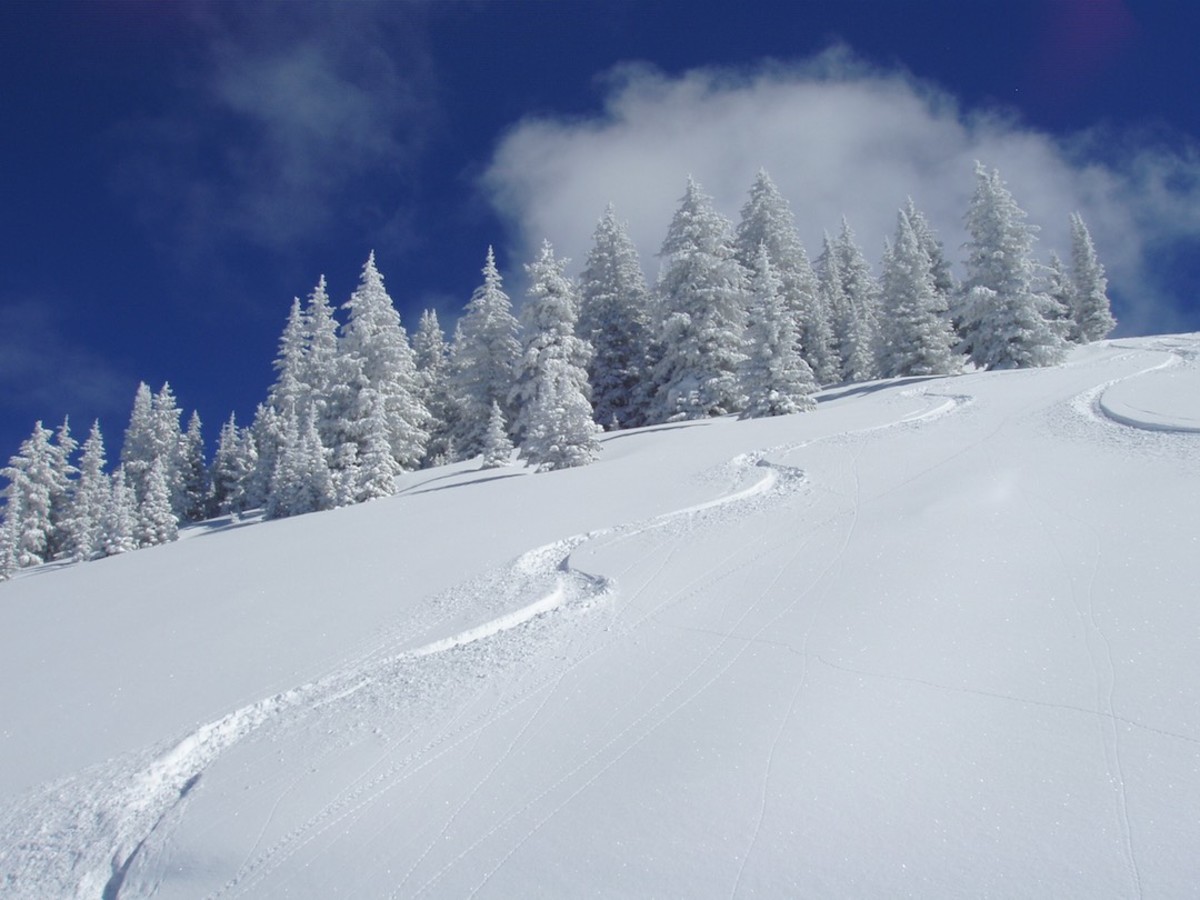
“All the easy powder is tracked out,” he says. “People start skiing in riskier places and in a riskier fashion, like turning really close to trees. They dive a tip or catch up in a drift and go flying head first. That inverted position, particularly in a tree well, can be lethal.”
Fly into the boughs of evergreen trees, particularly firs and spruce, and they give way easily, but are hard to push up, like a trap door. Skis and boards can catch up on the branches, pinning the person upside down. The snow inside the moat is especially unconsolidated, providing nothing to push on. And the sides are unstable; the more people struggle, the more snow falls down on them.
It’s not just big trees. As part of a class project, Bell and some of his students analyzed hours of YouTube videos of tree-well incidents. A surprising number involved small trees.
“They lawn dart right in there,” he says. “It’s a funnel that pins their arms at their sides. If no one sees it happen, it can be a death sentence.”
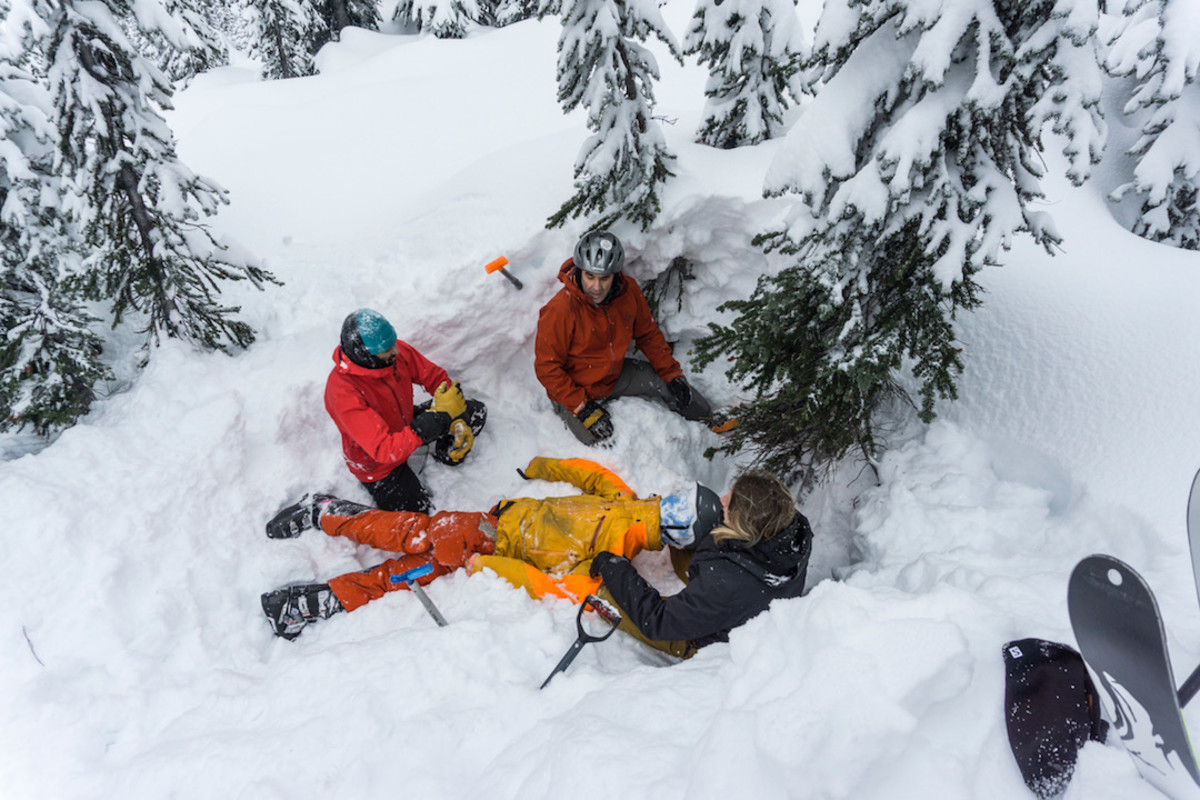
Bell’s class also performed a series of extraction tests, both with volunteers and dummies. Just two out of 20 volunteers were able to self extricate themselves. And digging out the dummies took an average of 5 minutes and up to 17, about the same as in an avalanche.
“If you get to the bottom of a run and your buddy doesn’t show up, by the time you get back to the top and retrace your tracks, it’s going to be too late,” Bell warns.
It’s why he’s no longer following the usual powder-day attitude of never waiting for ski buddies.
“We’re easily lulled into complacency,” he says. “We think being at the resort means the hazards are controlled, but they’re only so much the resort can do. We need to take care of each other out there.”
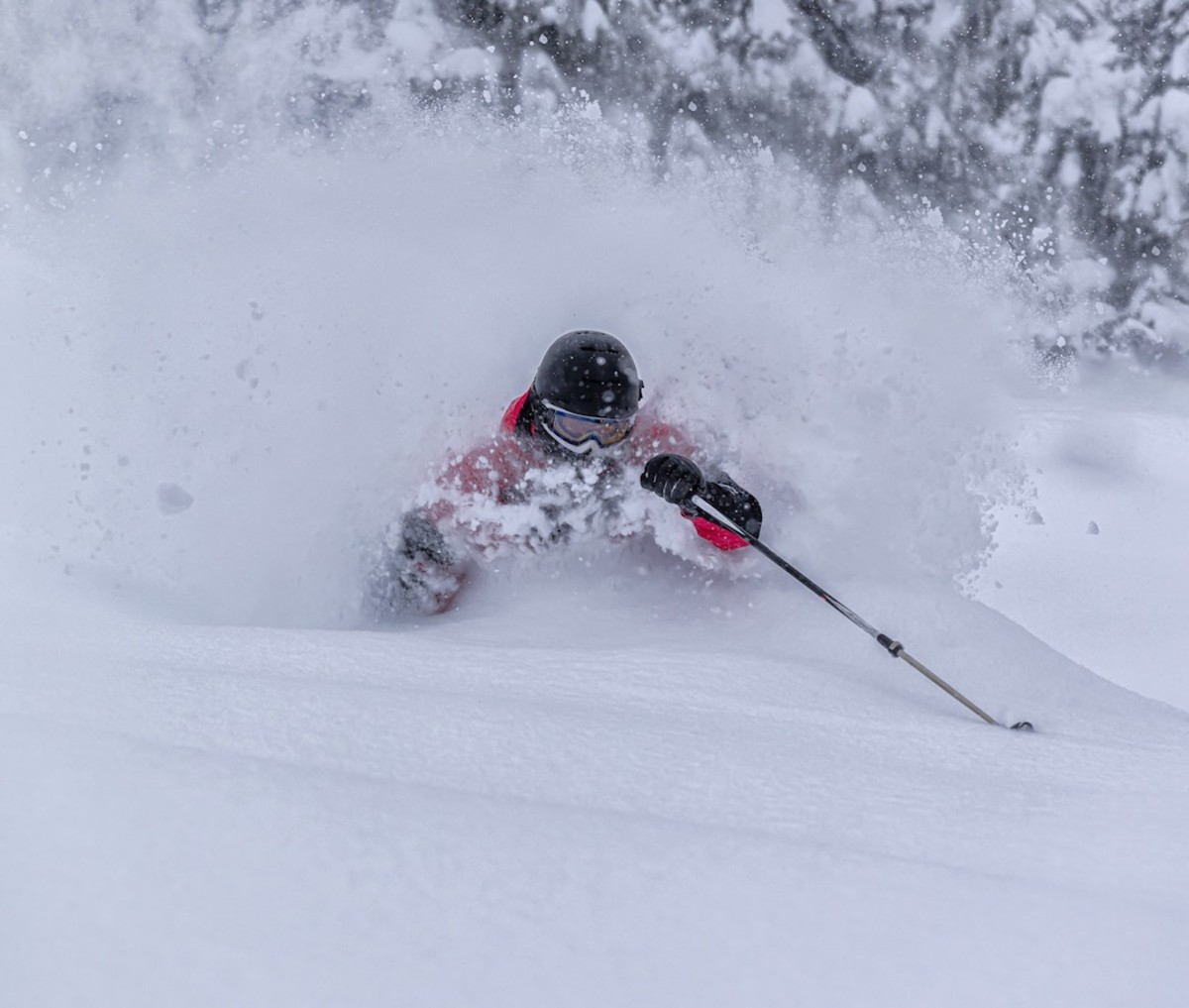
How to be a better ski buddy
Even if you avoid skiing close to conifer trees, there’s still a chance of snow suffocation. The best way to stay safe on the mountain is to ski with a friend. But that’s easier said than done. Here’s how to do it well.
-Stay within two or three turns of each other. In deep snow, it can take a long time to hike even a short distance up hill.
-The person at the back hoots and hollers constantly. If they get quiet the front guy stops immediately.
-If someone ends up in a tree well, get to them as quickly as possible. Get their skis off, clear snow down to their waist and pull from their belt.
Self-rescue
If you end up in a tree well on your own, stay calm and try to keep snow away from your mouth. Yell for help, or better, wear a whistle and blow it three times.
-Try to get your skis or board off.
-Use the trees branches to climb up.
-If you can’t get out, call ski patrol—put the number in your phone.
For access to exclusive gear videos, celebrity interviews, and more, subscribe on YouTube!






